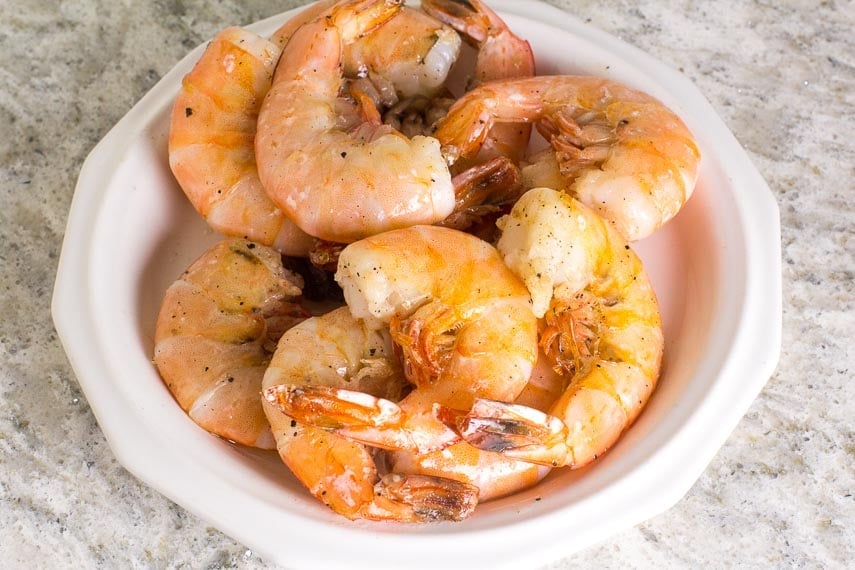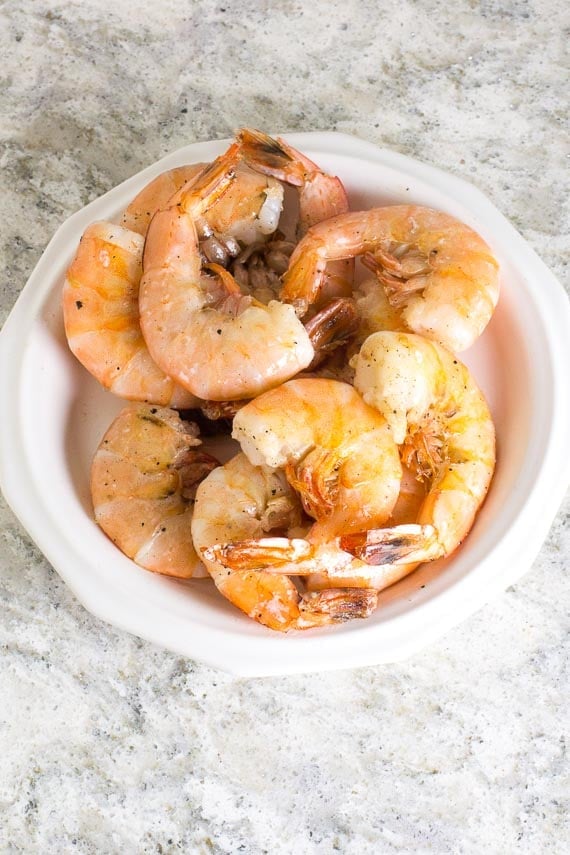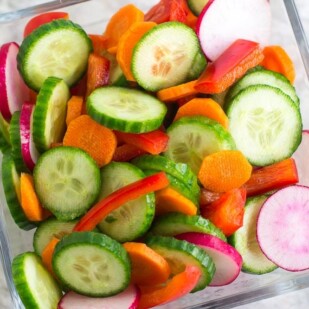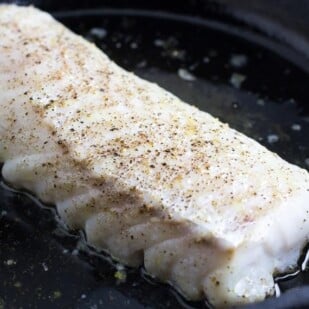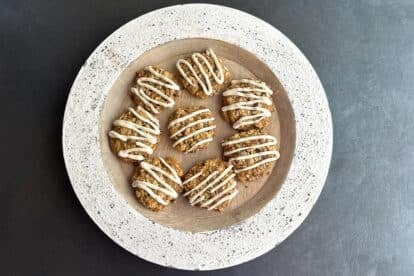Shrimp, being a protein, contain no FODMAPs. Our recipe for No FODMAP Sautéed Shrimp takes advantage of salt, pepper and a little olive oil, to make a simple shrimp dish that is part of our No FODMAP series. Serve with no FODMAP brown rice and one of our No FODMAP vegetable salads for a complete dinner or hearty lunch.
Buying Shrimp
While we often talk about buying the freshest possible seafood when discussing options, there is an exception and it is shrimp. For most of us, shrimp is never fresh. Even when it looks fresh in the fish department case, it is usually defrosted and if you read the small print it will say so.
Whether you are buying truly fresh shrimp, or defrosted, previously frozen shrimp, there are a few things to watch out for.
Talk with the seafood counter-person or read labels. Make sure that your shrimp are not treated with either sodium bisulfite, an industrial bleaching agent, or sodium tripolyphosphate (STP), a rehydrating agent.
In addition, some foreign shrimp, which might be less expensive and therefore attractive, might also be treated with antibiotics that are banned by the FDA. All of these additives affect flavor and texture negatively and are just not necessary.
Peeling Shrimp
I like to buy my shrimp with the shell for a few reasons. First of all, I will often use the shells to make a quick seafood stock that I can freeze for future use. Also, I think they are often of better quality.
For this dish you have a choice. You can certainly peel and devein the shrimp, in which case eating will be super-simple and neat and tidy. On the other hand, the shells can impart flavor, which I am partial to, so occasionally that approach wins out and I sauté them shells on, as you can see here in the images.
Choose Your Oil
All pure oil, being a fat, contains no FODMAPs, so you have a choice here, too. You could use vegetable oil, but I prefer olive oil for its flavor. Again, you can use whatever oil you like.
Make sure to visit our other No FODMAP recipes to help you build your meals throughout the days and weeks:
- No FODMAP Vegetable Salad
- No FODMAP Baked Potato
- No FODMAP Fruit Salad
- No FODMAP Chicken Paillard
- No FODMAP Malt Vinegar Salad Dressing
- No FODMAP Leafy Green Salad
- No FODMAP Steak
- No FODMAP Cod
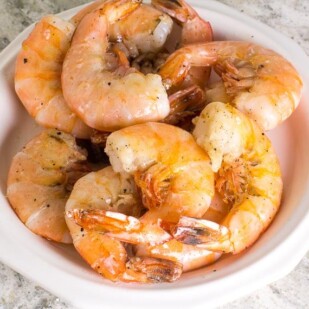
No FODMAP Sautéed Shrimp
Shrimp, being a protein, contain no FODMAPs. Our recipe for No FODMAP Sautéed Shrimp takes advantage of salt, pepper and a little olive oil, to make a simple shrimp dish that is part of our No FODMAP series. Serve with no FODMAP brown rice and one of our No FODMAP vegetable salads for a complete dinner or hearty lunch.
Ingredients:
- 1- pound (455 g) large shrimp (26 to 30 per pound), peeled and deveined, or not
- Olive oil
- Kosher salt
- Freshly ground black pepper
Preparation:
-
Generously coat the bottom of a heavy large skillet with olive oil, heating over medium heat. Once the oil is shimmering, add the shrimp and sauté just until they turn pink. It is easy to overcook shrimp, so don’t walk away from the pan.
-
Season with salt and pepper and serve.
Notes:
Tips
FODMAP Information
Our recipes are based on Monash University and FODMAP Friendly science.
- Oil: All pure oils are fats and contain no carbohydrates, therefore they contain no FODMAPs.
Please always refer to the Monash University & FODMAP Friendly smartphone apps for the most up-to-date lab tested information. As always, your tolerance is what counts; please eat accordingly. The ultimate goal of the low FODMAP diet is to eat as broadly as possible, without triggering symptoms, for the healthiest microbiome.
Nutrition
All nutritional information is based on third-party calculations and should be considered estimates. Actual nutritional content will vary with brands used, measuring methods, portion sizes and more. For a more detailed explanation, please read our article Understanding The Nutrition Panel Within Our Recipes.
